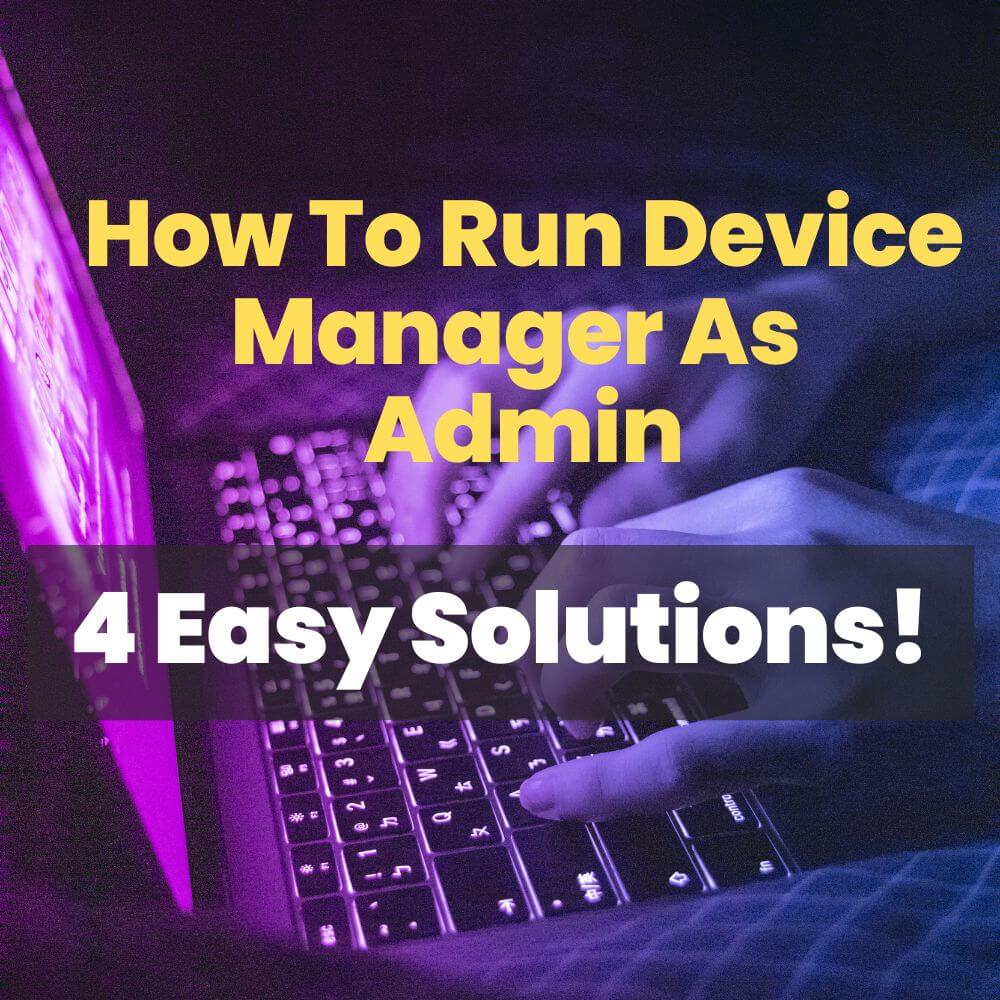Laptops and computers remain an indispensable part of modern existence. These devices allow one to perform several tasks and functions that were either impossible a century ago or much more cumbersome than they are today. These tasks often require the use of some part of the hardware that exists as part of our laptops.
At times, these activities may also require the use of external hardware that is plugged into the Laptop but which the Laptop’s central processing unit nevertheless needs to interact with so that the user can perform the actions he/she desires to perform. However, the central processing unit is unable to interact directly with any hardware.
Hence each piece of hardware, including the ones native to the Laptop, requires a specialized bit of software to facilitate interactions between the central processing unit of the Laptop or computer and that piece of hardware. The specialized bit of software is referred to as the hardware’s driver or the device’s driver, and these drivers and the hardware by extension, can be modified via the section of the Control Panel known as Device Manager.
Thus, making serious modifications to drivers and their hardware might require you to run Device Manager as an administrator, and it can be quite frustrating if you are, for some reason, unable to do so. The reason this problem exists is that Microsoft does not grant you the ability to run Device Manager as an administrator by default.
Nevertheless, this article will explain how to fix this issue.
Why Can’t I Run Device Manager as an Administrator?
You can run Device Manager as an admin, but you have to specifically seek this function. The possible reasons why you might have difficulty doing so are because:
- Microsoft does not grant you the ability to run Device Manager as an administrator by default. That is because most users simply do not need it, and adding unneeded functionality may end up increasing the likelihood that an errant piece of malware will be able to modify some key piece of software.
- Your user profile does not have administrator privileges.
How Can I Run Device Manager As Admin
The ways through which you can run Device Manager as an administrator include using Windows Task Manager, using PowerShell, creating a Device Manager shortcut with administrative privileges, and using a BAT file.
Here are 4 methods to run Device Manager as an administrator
Solution #1: Use Windows Task Manager
Using the following steps, you can run Device Manager as an administrator via Windows Task Manager.
Step 1: Move your cursor to the Windows icon located at the bottom left corner of your desktop and right-click it
Step 2: Navigate your cursor to Task Manager and click on it; it should be the 7th option when counting from the bottom up.
Step 3: When the Task Manager window opens up, click on File, which is located at the top left corner of the window
Step 4: A drop-down menu showing Run New Task should have appeared; click on that next.
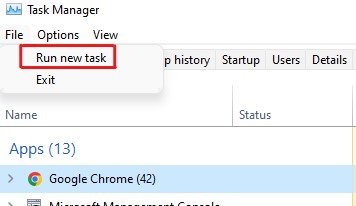
Step 5: When the Create New Task popup menu appears, use your cursor to click on the space within the field you see and type “devmgmt.msc” into that field (without the quotation marks)
Step 6: Below the field, there is a checkbox next to text that says “create this task with administrative privileges” click that checkbox
Step 7: Next, click on Ok
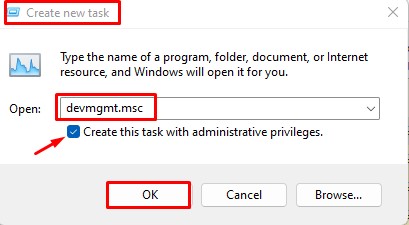
Solution #2: Use PowerShell
You can use PowerShell (a tool that grants you greater control over processes in Windows) to set Device Manager to always run as an administrator.
Step 1: Move your cursor to the Windows icon located at the bottom left corner of your desktop and right-click it
Step 2: Navigate your cursor to Windows PowerShell (Admin) and click on it; it should be the 8th option when counting from the bottom up.
Step 3: On the window that pops up asking if you want to make changes to your system, click Yes
Step 4: In the blue menu that appears, type “devmgmt.msc” (without the quotation marks) and click Enter.

Solution #3: Create a Shortcut to Device Manager with Administrative Privileges
You can create a shortcut that runs Device Manager as an administrator whenever it is opened. However, note that doing so means any person or malicious program that gains access to your Laptop while this is enabled would be able to easily disable key pieces of hardware while in use. Hence, you should disable this once you no longer need it.
Step 1: Move your cursor to any area of your desktop that does not have an icon and right-click it
Step 2: On the menu that appears, scroll down to the option that says New (W) (you will find it towards the bottom of the menu) and let your cursor hover over it
Step 3: Once the next drop-down menu appears, click Shortcut; you will find it at the very top of the menu.
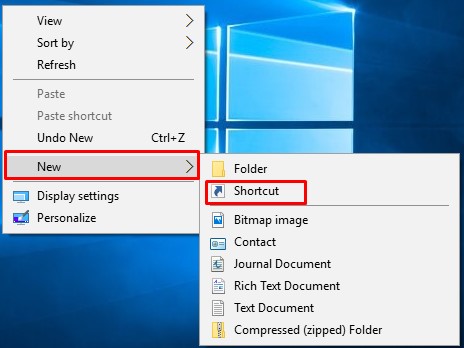
Step 4: Use your cursor to click on the empty field under the text that says “type the location of the item” and type “devmgmt.msc” (without quotation marks).
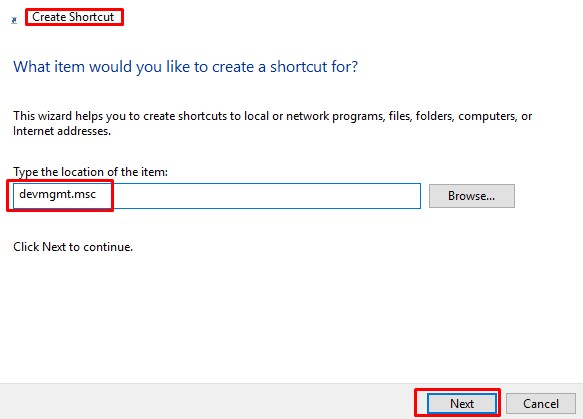
Step 5: Click the Next button, which you can find in the bottom right area of the menu.
Step 6: On the next page, use your cursor to click on the empty field under the text that says “type a name for this shortcut” and type whatever name you like; we recommend using “Master Device Manager” (without the quotation marks)
Step 7: Move your cursor to the bottom right of the page and click Finish
Step 8: Right-click the Master Device Manager shortcut that appears on your desktop and scrolls down the menu that appears till you find the Properties option
Step 9: Click on Properties. On the next menu that appears, look for Advanced. You will find it on the bottom half of the page, towards the right. Click on it.
Step 10: You should see a checkbox that says “Run as Administrator“ click on that checkbox. You will know you have done it right when you see a checkmark appear within it.
Step 11: Click the Ok button located on the bottom right corner of the page.
Step 12: Next, click the Apply button located at the bottom right corner of the Master Device Manager Properties menu
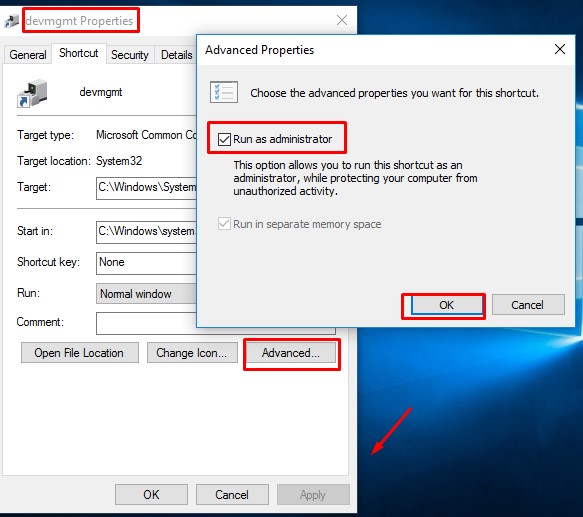
Step 13: Afterward, click the Ok button located in the bottom left corner of the Master Device Manager Properties menu.
Step 14: Finally, navigate your mouse to the Master Device Manager shortcut and open it. Now, you can open Device Manager as an administrator whenever you want.
Solution #4: Set Device Manager to Run as Administrator whenever you boot up your Laptop
Just like method 3 above, this has some drawbacks in terms of security. However, if you are sure you will disable it immediately after you are done or do not plug external devices into your Laptop and never connect it to the internet, you can give it a try.
Step 1: Navigate to the search bar on the left side of your Taskbar and type in “Run” (without the quotation marks)
Step 2: Click on the Run icon that appears at the top of the list of best matches.
Step 3: In the field that appears, type in “shell:startup” (without the quotation marks) and click the Enter key. The folder that opens contains all programs that automatically open when you open whatever user profile you are currently using on your Laptop.
Step 4: Right-click any blank space in that folder, move to New under the popup menu and click on Text Document.
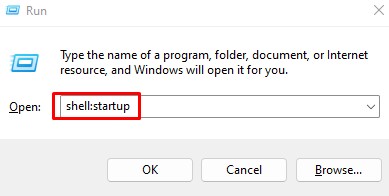
Step 5: Change the file extension of that file from “.txt” to “.bat”
Step 6: Open that file and copy and paste this text into it, making sure to separate the lines as typed here
Begin.bat:
Start/elevate/min
C:\Users\Name of Your Profile\Cmds\devmgmt.msc
Then restart your Laptop, and voila, Device Manager will automatically launch in a window you can find on the Taskbar.
Final Thoughts
There are multiple ways through which you can run Device Manager as an administrator including using Windows Task Manager, using PowerShell, creating a shortcut to Device Manager that you can then grant administrative privileges, and setting Device Manager to launch with administrative privileges whenever you boot up your Laptop.
Frequently Asked Questions
Running Device Manager as an administrator allows you to make changes to the drivers under Device Manager, and these drivers in turn, allow you to alter the functionality of various pieces of hardware included in your Laptop as well as those that are external but have been previously connected to your Laptop. For example, it allows you to disable device drivers.
If you disable the device driver for your touchscreen, for example, it will stop responding until it is re-enabled.
You can also use Device Manager to scan for the properties of your hardware, such as your graphics processing unit and your screen. This lets you find out just what type of hardware you have, who made it, and what it is capable of
If Device Manager is not working, you can fix it. To do that, follow these steps:
1. Press the Windows Key, type cmd in the search bar, and then press the Enter key
2. Within the window that opens up, type “sfc /fscannow” without quotation marks and press the Enter key
3. A scan will start, wait for it to finish, and try to open Device Manager again

